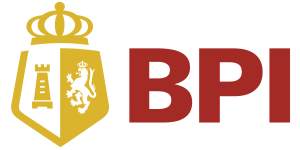Products
Description
The Bank of the Philippine Islands (BPI) is a universal bank and the first bank of the Philippines, as it was established during the Spanish colonial period. As of 2024, it is the third-largest Filipino bank, with over ₱3,185,532 million in assets. It has over 900 branches in the Philippines, Hong Kong, and Europe, and it’s one of the most profitable banks in the country.
Products of the BPI
-
Accounts: BPI offers 3 different checking accounts and 9 savings accounts, plus 3 time deposit ones. The range of offers includes accounts in pesos and US dollars.
-
Cards: the offer includes debit, credit, and prepaid cards. There are 10 credit cards available from either Visa or Mastercard.
-
Loans: BPI grants loans for personal use, and loans to buy a car, motorcycle, or house. There are also loans for businesses and corporations. People can request a loan even if they’re not existing BPI clients.
-
Investment: there are over 25 funds you can invest in with BPI, and investments start as low as ₱1000. You can invest in securities, trust funds, mutual funds, and equity.
-
Insurance: BPI has several subsidiaries through which clients can hire insurance plans to protect their homes, cars, health, and travels. There’s even a commuter insurance to protect from accidents in public transportation.
BPI also has a mobile app, VYBE, through which clients can send and receive money instantly, and make payments with an electronic Wallet. Using the app allows access to a robust reward system with exclusive deals and discounts.
History of the BPI
The BPI was originally El Banco Español Filipino de Isabel II and it was established in 1851, during the Spanish colonial period. it was the first government bank and the third Filipino bank in that era. When the bank was created, it was also granted the power to print Philippine currency. In 1852 it was the first time the Philippine peso was printed, called peso fuerte (strong peso) at the time.
In 1869 the name of the bank changed to just Banco Español-Filipino, after a revolution overthrew Isabella II. The first branch outside of Manila opened in 1897 in Iloilo City. Later, in 1898 the Philippines became a US colony and the Banco Español-Filipino became solely a Philippine institution and was privatized. In 1912, the name was changed to the current Bank of the Philippine Islands.
In 1934, the power of the BPI to print pesos was stopped, and after the creation of the Central Bank of the Philippines in 1949, it was completely lost. After World War II, BPI was involved in reconstructing the Philippines.
The first merger took place in 1974 when BPI acquired the People’s Bank and Trust Company. Other major mergers happened in 1981, 1996, 2000, 2005, and 2022, with many smaller ones in between. Most recently, BPI acquired Robinsons Bank in 2024.
In 1982 it became a universal bank and in the year 2000, the first bank to offer insurance services in the Philippines.
BPI established its own interbank network, Expressnet, in 1986. The network is the second-largest network in the number of ATMs, but it has a small number of clients and member banks.
In 2017 BPI had a glitch that showed either a negative balance or more money than they really had, in the account balances of some clients. It took 2 attempts to fix the issue, which extended for 2 days.
In 2019 BPI launched a new logo and in 2023, a new tagline: Do More.
Bank data
International presence
Philippines, Hong Kong, Japan, United Arab Emirates, United Kingdom
